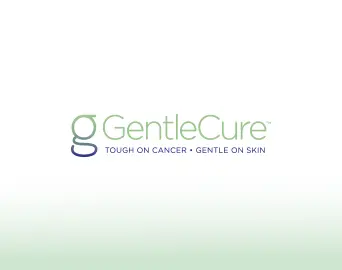Superficial radiation therapy (SRT) and photodynamic therapy (PDT) are both innovative medical treatments designed to combat various skin conditions, including certain cancers and dermatological disorders. In this comparison between superficial radiation therapy vs. photodynamic therapy, we will explore the key differences between SRT vs. PDT.
What are the Differences Between SRT vs. PDT?
Superficial therapy for skin cancer uses low-energy X-rays (similar to a dentist’s X-rays) to penetrate the skin and treat cancer that is on or close to the surface of the skin. There is no need for anesthesia, no bleeding, and no open wounds left by the procedure. With Image-Guided SRT, the cancer cells can be measured during treatment, so you can see your skin cancer shrink throughout your treatment. This helps to reaffirm that your skin cancer is being cured.
On the other hand, PDT is considered a two-stage treatment. It combines a drug called a photosensitizer with a specific wavelength of light that triggers the photosensitizer to become toxic to the tissue it’s applied to. This makes it capable of breaking down cancerous and precancerous cells. PDT can even be used internally to treat some cancers, such as pancreatic, bile duct, esophageal, and lung cancer. The downside is that photodynamic therapy can be harmful to normal cells in the treatment area, as well as the surrounding area.
SRT vs. PDT: Precision and Targeting
One of the largest benefits of Image-Guided SRT is its exceptional precision and targeting capabilities when it comes to superficial therapy for skin cancer treatment. Utilizing ultrasound, Image-Guided SRT offered through GentleCure enables accurate localization of the treatment area. This precision allows for the delivery of low doses of X-ray energy directly to the affected tissues while minimizing damage to surrounding healthy structures. In contrast, PDT relies on the selective activation of photosensitizing agents by light, leading to a broader and less precise treatment field, which can lead to increased side effects.
SRT vs. PDT: Surgery-free
One significant advantage of Image-Guided SRT is it’s surgery-free. Patients undergoing Image-Guided SRT experience a non-surgical approach, minimizing the risks associated with invasive procedures. In contrast, PDT often requires the application of photosensitizing agents and subsequent light exposure that may necessitate invasive measures, such as injections or topical applications, potentially leading to discomfort and complications.
Treatment Duration of Superficial Radiation Therapy vs. Photodynamic Therapy
Image-Guided SRT typically offers shorter treatment durations compared to PDT. The efficiency of Image-Guided SRT sessions, coupled with its ability to integrate seamlessly into a patient’s routine, enhances treatment convenience. This means that when you partner with GentleCure, you require no hospital stays, no limits to daily activities, and no surgical follow-ups. You can be out the door in as little as 15 minutes, with 15 to 20 treatments over the course of several weeks. PDT, on the other hand, may require extended exposure times of up to an hour to achieve therapeutic effects. This can pose challenges to patient compliance and comfort several hours after the light-sensitizing cream has been applied to your skin.
Find Out How GentleCure Can Help You Today
In the realm of superficial therapy for skin cancer treatment, Image-Guided SRT is known for its precision, non-invasiveness, efficiency, versatility, and minimal side effects. GentleCure can help you get back on your feet with no interruption to your day-to-day activities. Reach out to our team today, and we’ll work with you to make sure you’re getting the best treatment for your lifestyle. You can also find out about the differences between Image-Guided SRT and Mohs surgery for treating many common types of skin cancer.
